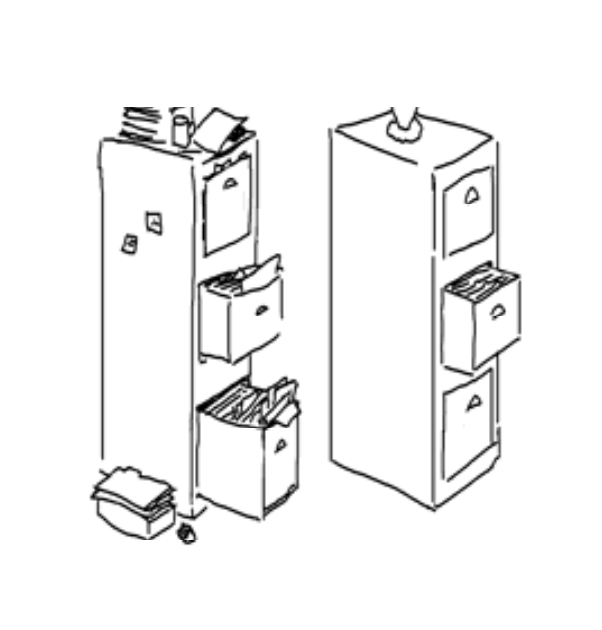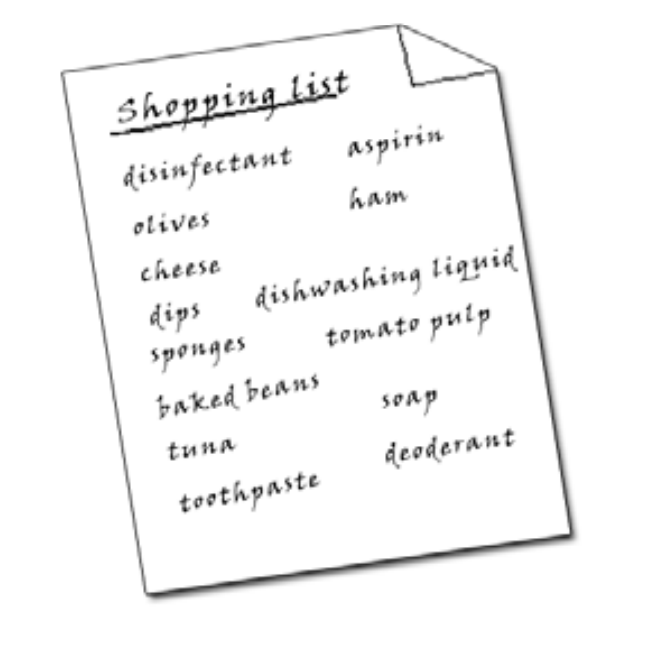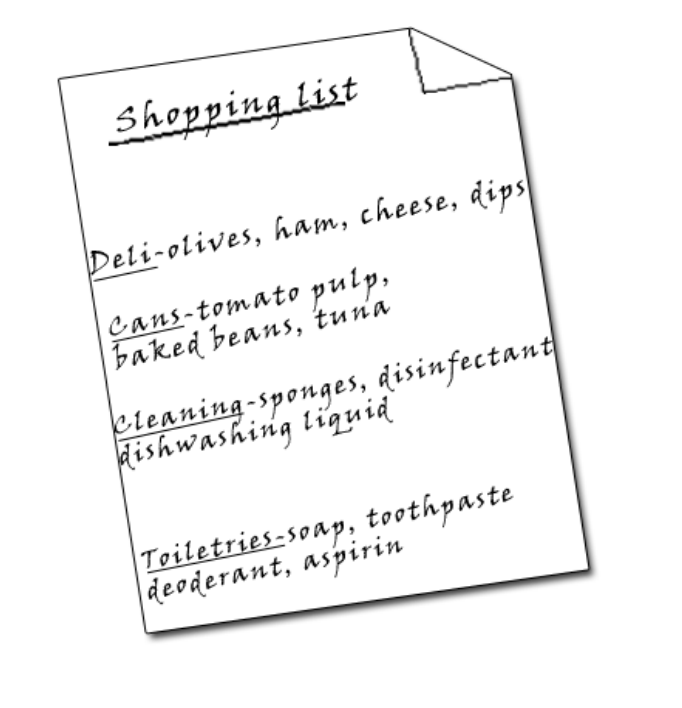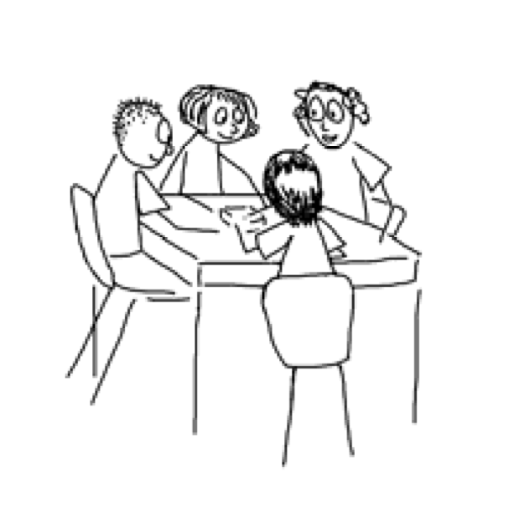Helping students understand and remember what you teach
Brain overload!
We all suffer from information overload at some time so it is not surprising that VET students often complain about the amount of content and terminology that they have to learn and understand in a given period of time. Brain or content overload happens more frequently when there are just too many words, ideas or concepts (usually expressed in language) to learn at once. This is especially likely if motivation is low, or the concepts and language to be learned are difficult to understand. In fact too much information can even lead to brain shutdown!
Brain overload → Shutdown!
The task of remembering
How information is structured and taught obviously impacts on the ability of students to learn. In fact psychologists have found that we are only able to pay attention to between 5-7 pieces of information at a time. For example when asking for directions if there are more than 5-7 steps in the answer the memory often falters or if you have tried to remember a long shopping list in your head you’ll probably come back from the supermarket without all the things you need. This phenomenon is often called the ‘bottleneck problem’: too much information to be processed at a time from short term memory to storage in long term memory.

‘in one ear and out the other’
Often it is really a case of ‘in one ear and out the other’.
In practical terms this means after listening to a lecture or class session or after reading an instruction manual or textbook there is a limit to how much information can be remembered. Everything else will be forgotten! How often do you find that your students have hardly remembered a thing from yesterday’s class?
Solving the bottleneck problem
Chunking - organising content to assist learning
One of the strategies in remembering and getting round the bottleneck problem is to organize information so that it is easier to remember. ‘Chunking’ involves organizing a number of little ideas or bits of information into bundles or categories to make remembering them easier.
The filing cabinet metaphor
We could think of the brain in comparison to a filing cabinet. Like all filing cabinets it can either be organised effectively or badly. If there are lots of unrelated and random bits all jumbled in together then it is hard to access information when you need it. However if the information is chunked or connected together in some meaningful way, then it becomes a useful, retrievable store of information.

Chunk content!
Remembering phone numbers - an example of chunking
A simple example of this is the way some of us have learned to remember 10 digit mobile phone numbers. As a string of single entities 10 digits such as 0431653363 are far too much for the brain to remember. Instead we try to remember by grouping the digits into chunks like 0431 – 653 – 563.
The grocery list example
Another example is a grocery list. It can be items randomly scattered on a piece of paper:
Grocery list

Or it can be organised under category headings
- Deli - olives, ham , cheese, dips
- Cans – tomato pulp, baked beans, tuna
- Cleaning - dishwashing liquid, disinfectant, sponges
- Toiletries - soap, toothpaste, deodorant, aspirin

In this example, having the correct conceptual language (name of the category) - is the key to finding the appropriate heading and so to accessing the information stored within it.
Organising content to assist learning
It is really useful to keep these ideas in mind when planning content within vocational courses. It helps to remind us to keep information in manageable ‘chunks’ for learning and to focus on making connections between the chunks as each new one is introduced This is useful whether students are trying to listen to information presented orally or reading learning materials. If there is too much information at once it can become a jumble in the brain, if it gets there at all.
Making links or connecting to ‘schemas’
Another related strategy for remembering new information is to actively link new ideas to associated collections of information in our long term memory. These collections of information are usually stored in interconnected categories, known as ‘schemas’. We can think of the brain’s storage system for memories as like bunches of fish hooks rather than a pile of marbles. Whereas fish hooks can link together, marbles scatter and can’t be found easily when you need them. If information is not organised in your brain it is difficult to locate, so making clear links or interconnections between bits of information can help ensure that it is stored in the right place. This way it is easier to remember when you need it.
Make links to previous content.
Fish hooks not marbles!
Providing overviews & summaries
Teachers can assist students’ learning by making clear what is important and, in a sense, modelling to the students how to organise their content. Going over the main ideas, key concepts or the important big chunks for a session or unit of study as a brief overview at the beginning gives student a way in to identifying, naming and organising the key chunks of information and language and linking this information with what they already know so that real understanding can take place. Understanding and linking to prior knowledge is a key to remembering. It also helps to finish a session or unit of work with a short summary of key ideas or main points.
Make clear what is important!
Using remembering strategies in the VET classroom
It is useful to keep these ideas in mind when planning content within vocational courses. Knowledge of how memory works reminds us to keep information in manageable ‘chunks’ for learning and to focus on actively making connections between the chunks as each new one is introduced. As teachers we may ‘cover the curriculum’ by presenting a great deal of information in every session, but the effect on students learning is doubtful.

Less is more!
Learn a little at a time.
‘Less is more’ – chunking curriculum content
When information is broken into smaller topic chunks so students can engage with a little at a time, it becomes easier to learn. The language and terminology of modules can be transferred gradually, in small clusters, into the long term memory. This way the students can build their vocational knowledge and its related language in achievable chunks. Following this thinking, it is easier to see why ‘less is more’ or less content delivered can be more content understood in the long term.
Get students to engage with the chunks
A little at a time – ‘engaging’ with the chunks
We mentioned above that learners should be given a chance to ‘engage’ with the smaller chunks of information, before a new one is introduced. This means providing a space between each chunk for learners to interact with the knowledge or information that has just been introduced. Doing something with new ideas gives students a chance to focus and hopefully understand them better. It is almost impossible to remember content that you have not actively engaged with or understood. An effective strategy is to change the literacy mode after a new content chunk. For example, switching from reading to listening or talking about the topic are means of changing mode.
Engaging students with real life examples or stories
Another way of changing literacy mode is the use of stories. Have you noticed how students really start to listen when you tell them a story ‘from the coalface’: an anecdote about your own workplace experience that relates to the knowledge you are teaching them? It is often a story with a message – a tale of catastrophe due to the lack of knowledge or planning - but it has a memorable effect. Stories tend to stick in the memory when all other details of a class are forgotten. Many vocational teachers tell ‘on the job’ stories naturally, without being particularly conscious that they are using a powerful teaching strategy. It is however, a strategy we can all learn from. It is a great way to make a topic come alive, to engage and motivate students and give them a way into remembering the topic. Workplace anecdotes can be used to relate real life examples to abstract ideas (practice with theory). Somehow personalising these ‘case studies’ is even more powerful because they happened to someone the students can relate to – this provides an extra memory hook. Often when teachers find themselves rushing to ‘get through the curriculum’ they stop telling their stories and so this very effective teaching device can be lost.

Students telling their own stories
Similarly, it is empowering to encourage students to share relevant stories and anecdotes with each other. These will not only be remembered by other students they can become case studies to build future teaching around as a way of valuing student input and increasing motivation and involvement. Encouraging students to tell their own stories is also a way of engaging with a chunk of content and a change of literacy mode to students speaking.
